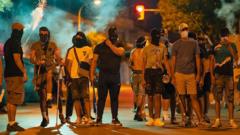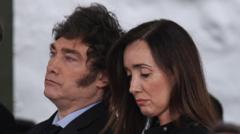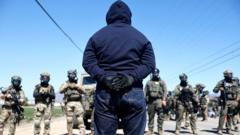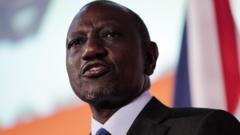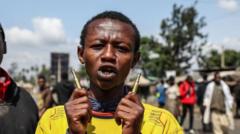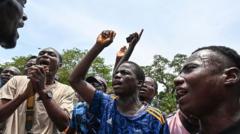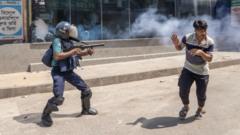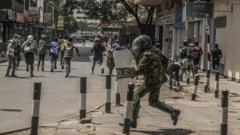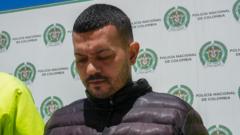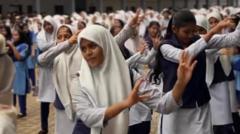In a shift from traditional rallies, roadblocks have become the new form of protest as the movement against President Vucic intensifies, showcasing public frustration and resilience.
**Roadblocks and Civil Disobedience: A New Chapter in Serbian Protests**
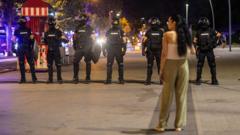
**Roadblocks and Civil Disobedience: A New Chapter in Serbian Protests**
As protests against President Vucic's government evolve, Serbians demand accountability and new elections.
Following nearly nine months of anti-corruption protests in Serbia, a significant shift in tactics has occurred as demonstrators move from rallies to civil disobedience. Last weekend's large-scale protest in Belgrade, which drew around 140,000 attendees, marked a turning point. The student groups that have been at the forefront since the protests began in November have now stepped back from leadership, setting a deadline for the government to announce new elections. When this did not transpire, they invited other factions to join in the protests, launching a campaign of "civil disobedience" against President Aleksandar Vucic and his ruling Progressive Party (SNS).
This week, roadblocks have emerged across major Serbian cities, with citizens using dustbins and chairs to obstruct crucial intersections in Belgrade, Novi Sad, and Nis. Local residents' associations, termed "citizens' assemblies," have played a vital role in these actions. As authorities dismantle one blockade, protesters quickly establish another, creating a continuous cycle of disruption.
The government's response has included a notable increase in arrests, raising concerns over the use of excessive force by police. A recent incident at Belgrade University saw students injured, with one sustaining a broken collarbone due to police intervention. This heavy-handed approach has sparked criticism from various groups, including opposition parties, journalists, and even religious leaders, all denouncing the police's aggressive tactics. The European Union has expressed disapproval of the violence, urging peaceful resolution.
Commuters are experiencing significant difficulties due to the sudden roadblocks, with some residents likening the atmosphere to casual street parties rather than formal protests. However, the effectiveness of this new strategy remains in question, as some analysts suggest it may not yield more results than the previous series of demonstrations.
The protest movement originally began as a response to a tragic incident at Novi Sad railway station last November, where a collapsed canopy killed 16 people and sparked national outrage. Grief morphed quickly into calls for accountability, with many Germans attributing responsibility to President Vucic's governance style, perceived as autocratic since he took office in 2012. Although there were some administrative changes, the core grievances of the protesters remain unresolved.
While the protests have mobilized impressive crowds and spurred greater societal participation, the political landscape appears relatively stable for the SNS party, with polls indicating continued support. Vucic's recent declarations suggest confidence in his leadership, framing the protests as attempts to destabilize the state.
The current scenario presents a challenge to both the protesters and the government, with each side facing pressures to maintain their positions. As public frustrations simmer alongside rising temperatures, the future of these demonstrations remains uncertain, and the unresolved question of potential elections looms large on the horizon.
This week, roadblocks have emerged across major Serbian cities, with citizens using dustbins and chairs to obstruct crucial intersections in Belgrade, Novi Sad, and Nis. Local residents' associations, termed "citizens' assemblies," have played a vital role in these actions. As authorities dismantle one blockade, protesters quickly establish another, creating a continuous cycle of disruption.
The government's response has included a notable increase in arrests, raising concerns over the use of excessive force by police. A recent incident at Belgrade University saw students injured, with one sustaining a broken collarbone due to police intervention. This heavy-handed approach has sparked criticism from various groups, including opposition parties, journalists, and even religious leaders, all denouncing the police's aggressive tactics. The European Union has expressed disapproval of the violence, urging peaceful resolution.
Commuters are experiencing significant difficulties due to the sudden roadblocks, with some residents likening the atmosphere to casual street parties rather than formal protests. However, the effectiveness of this new strategy remains in question, as some analysts suggest it may not yield more results than the previous series of demonstrations.
The protest movement originally began as a response to a tragic incident at Novi Sad railway station last November, where a collapsed canopy killed 16 people and sparked national outrage. Grief morphed quickly into calls for accountability, with many Germans attributing responsibility to President Vucic's governance style, perceived as autocratic since he took office in 2012. Although there were some administrative changes, the core grievances of the protesters remain unresolved.
While the protests have mobilized impressive crowds and spurred greater societal participation, the political landscape appears relatively stable for the SNS party, with polls indicating continued support. Vucic's recent declarations suggest confidence in his leadership, framing the protests as attempts to destabilize the state.
The current scenario presents a challenge to both the protesters and the government, with each side facing pressures to maintain their positions. As public frustrations simmer alongside rising temperatures, the future of these demonstrations remains uncertain, and the unresolved question of potential elections looms large on the horizon.



